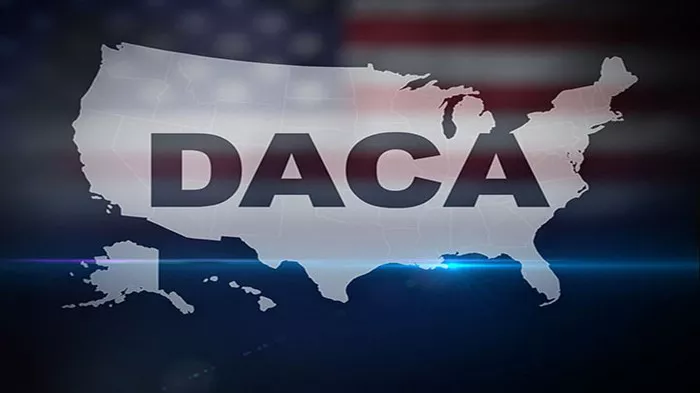In the landscape of immigration policy in the United States, few programs have garnered as much attention and controversy as the Deferred Action for Childhood Arrivals (DACA) program. Established in 2012, DACA has provided a lifeline to hundreds of thousands of undocumented immigrants who were brought to the country as children, offering them temporary relief from deportation and access to certain privileges. In this article, we will delve into the intricacies of DACA, exploring its definition, history, eligibility criteria, benefits, application process, and the current legal challenges it faces.
What is DACA?
The Deferred Action for Childhood Arrivals (DACA) program was established by the Obama administration in 2012 through executive action. DACA provides temporary protection from deportation and work authorization to eligible undocumented immigrants who were brought to the United States as children, often referred to as Dreamers. The primary goal of DACA is to provide relief to individuals who entered the country illegally as minors and have since integrated into American society.
Who is eligible for DACA?
To be eligible for DACA, applicants must meet several criteria. Firstly, they must have arrived in the United States before turning 16 years old and have continuously resided in the country since June 15, 2007. Additionally, applicants must have been under the age of 31 as of June 15, 2012, the date when DACA was established.
Education or military service is also a requirement for DACA eligibility. Applicants must either be currently enrolled in school, have graduated from high school, obtained a GED certificate, or have been honorably discharged from the U.S. armed forces or Coast Guard. Furthermore, DACA applicants must not have been convicted of a felony, significant misdemeanor, or three or more misdemeanors, and must not pose a threat to national security or public safety.
Benefits of DACA
DACA offers several benefits to eligible individuals:
1. Work Authorization: DACA recipients are granted permission to work legally in the United States, allowing them to obtain employment and contribute to the economy. This authorization is renewable every two years, contingent upon meeting DACA’s ongoing requirements.
2. Driver’s License: Many states allow DACA recipients to obtain driver’s licenses, providing them with the ability to drive legally and access various opportunities such as employment, education, and healthcare.
3. Protection from Deportation: DACA provides recipients with temporary relief from deportation, allowing them to remain in the United States without the constant fear of being removed from their communities, families, and livelihoods.
These benefits have had a significant positive impact on the lives of DACA recipients, enabling them to pursue their educational and career goals, support their families, and contribute to their communities.
A Step-by-Step Guide to Apply for DACA
The process of applying for DACA involves several steps, and it’s essential to ensure all requirements are met and documentation is submitted accurately. Here’s a step-by-step guide to the DACA application process:
1. Determine eligibility: Review the eligibility criteria outlined by U.S. Citizenship and Immigration Services (USCIS) to confirm eligibility for DACA.
2. Gather required documents: Collect necessary documents, including proof of identity, age, immigration status, and educational or military qualifications.
3. Complete Form I-821D: Fill out Form I-821D, Consideration of Deferred Action for Childhood Arrivals, accurately and completely. This form serves as the official DACA application.
4. Complete Form I-765: Along with Form I-821D, applicants must also submit Form I-765, Application for Employment Authorization, to request work authorization.
5. Prepare supporting evidence: Compile supporting evidence, such as school records, medical records, employment records, and affidavits from individuals who can attest to your circumstances.
6. Submit the application: Once all forms and supporting documents are assembled, submit the DACA application package to USCIS, along with the required filing fee.
7. Attend biometrics appointment: If USCIS accepts the DACA application, applicants will be scheduled for a biometrics appointment to provide fingerprints, photographs, and signatures.
8. Await USCIS decision: USCIS will review the DACA application and supporting documents and notify the applicant of its decision.
9. Renew DACA status: If approved, DACA recipients must renew their status every two years by submitting a renewal application to USCIS.
Current Status and Legal Challenges of DACA
Since its inception, DACA has faced legal challenges and uncertainty. In September 2017, the Trump administration announced plans to end the program, leading to a series of legal battles and court rulings. As a result, USCIS continued to accept DACA renewal applications, but new applications were put on hold.
In June 2020, the U.S. Supreme Court ruled in a landmark decision that the Trump administration’s attempt to end DACA was “arbitrary and capricious” and violated the Administrative Procedure Act. The ruling allowed DACA to continue, providing relief to hundreds of thousands of DACA recipients.
However, DACA’s future remains uncertain, as legal challenges persist, and political debates over immigration policy continue. The Biden administration has expressed support for DACA and introduced legislation to provide a pathway to citizenship for DACA recipients and other undocumented immigrants.
Despite these challenges, DACA continues to provide vital protection and opportunities for eligible individuals, allowing them to pursue their dreams and contribute to society.
Conclusion
In conclusion, DACA stands as a testament to the resilience and determination of undocumented immigrants who were brought to the United States as children. By providing temporary relief from deportation and access to work authorization, DACA has empowered hundreds of thousands of individuals to build better lives for themselves and their families. As the program navigates through legal challenges and political uncertainties, its impact on the lives of DACA recipients and the broader immigration debate in the United States remains profound.


